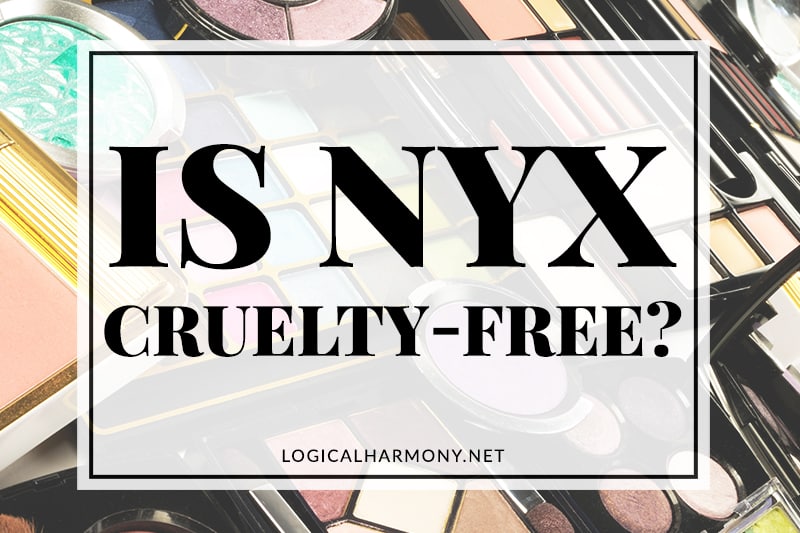In recent years, the conversation surrounding animal welfare and ethical consumerism has erupted, particularly within the beauty industry. One brand that often finds itself at the epicenter of this debate is NYX Cosmetics. As a vibrant and affordable makeup line, NYX has garnered a loyal following, especially among those who prioritize cruelty-free products. However, is NYX truly animal cruelty-free, or is it complicit in wider ethical quandaries due to its parent company? This question invites scrutiny and paves the way for a deeper exploration of the brand’s practices and the affiliations that define its operational ethics.
To dissect this inquiry, it is paramount to first understand what “cruelty-free” signifies in today’s marketplace. The term generally indicates that a brand does not test its products on animals during development—this includes all facets of a product’s life cycle, from ingredient sourcing to final application. Advocacy groups and consumer organizations have established clear guidelines for what cruelty-free certification entails. However, mere compliance with these guidelines does not automatically equate to a brand’s ethical integrity. This nuance becomes especially salient when considering the overarching influence of parent companies.
NYX Cosmetics is a subsidiary of L’Oréal, a conglomerate that has faced myriad allegations regarding its animal testing policies. While NYX itself has publicly committed to cruelty-free practices, critics argue that aligning with a corporation that operates in markets where animal testing is mandated poses substantial ethical dilemmas. In regions like China, for example, animal testing is a legal requirement for many cosmetics sold within its borders. Companies can attempt to navigate this requirement in various ways, but ultimately, the association raises a red flag for conscientious consumers.
Let us ponder a hypothetical scenario: A consumer, passionate about animal rights, seeks solace in NYX’s cruelty-free label and buys their favorite lipstick. Unbeknownst to them, the profits contribute to a parent company whose practices are less than savory. Does the advocacy for ethical consumption falter when the lineage of a product harbors questionable practices? This challenge is not merely philosophical; it strikes at the very heart of consumer ethics.
Moreover, the landscape of beauty products is increasingly convoluted. Brands often resort to marketing strategies that emphasize their cruelty-free status while downplaying the complexities of their corporate affiliations. This maneuvering can create a veneer of ethicality that may deceive well-intentioned consumers. When we peel back these layers, we find a barrage of intricate relationships and an ethical labyrinth that complicates the very idea of fidelity to animal rights.
Now, one might ask: Can any genuine hope for systemic change arise within a company operating under such corporate dynamic? Advocates argue that consumer choice can indeed provoke change. The financial might of conscientious buyers has catalyzed many beauty brands to adopt cruelty-free policies. This dynamic flourishes when consumers amplify their voices, demanding transparency not only from the brands they cherish but also from the entities that own them. Thus, one must consider the broader implications of consumer behavior. When a large number of people reject products from companies ensnared in unethical practices, it sends ripples through the industry’s fabric, compelling parent companies to reassess their policies.
Additionally, it is essential to acknowledge the rise of independent brands that possess unwavering commitments to cruelty-free principles. These brands often represent the pinnacle of ethical production, given their autonomy from larger companies that have historically turned a blind eye to animal welfare. Engaging with such brands could present a more straightforward path for consumers seeking to align their purchases with their values. By making informed choices, individuals can dismantle the oppressive structures that threaten animal welfare.
In light of all this, how can consumers navigate their allegiance to brands like NYX while remaining staunch advocates for animal rights? One effective approach is to stay informed. Subscribing to newsletters from animal rights organizations can illuminate the latest developments in animal testing laws and corporate practices. Moreover, voicing concerns through social media has proven to be a significant platform for dialogue, enabling activists to challenge brands and demand accountability.
As we examine NYX, it becomes crucial to foster a broader understanding of ethical consumption. The relationship between parent companies and their subsidiaries must be scrutinized as rigorously as the practices of independent brands. While consumers relish the affordability and color diversity offered by brands like NYX, it is imperative to remember that loyalty toward a brand must also encompass the values they represent, including the sanctity of animal life.
Consequently, as this inquiry draws to a close, the question remains—can one unequivocally endorse NYX as a truly cruelty-free brand, especially when viewed through the prism of corporate accountability? Only time, consumer vigilance, and a persistent push for transparency will reveal the depths of NYX’s commitment to animal welfare. The road ahead requires a fusion of awareness, activism, and ethical consumerism, illuminating the path toward a more compassionate future for all beings.





